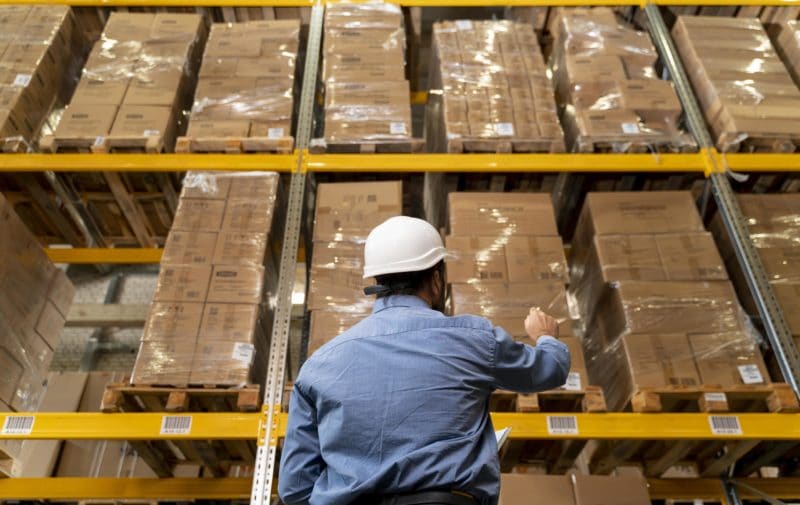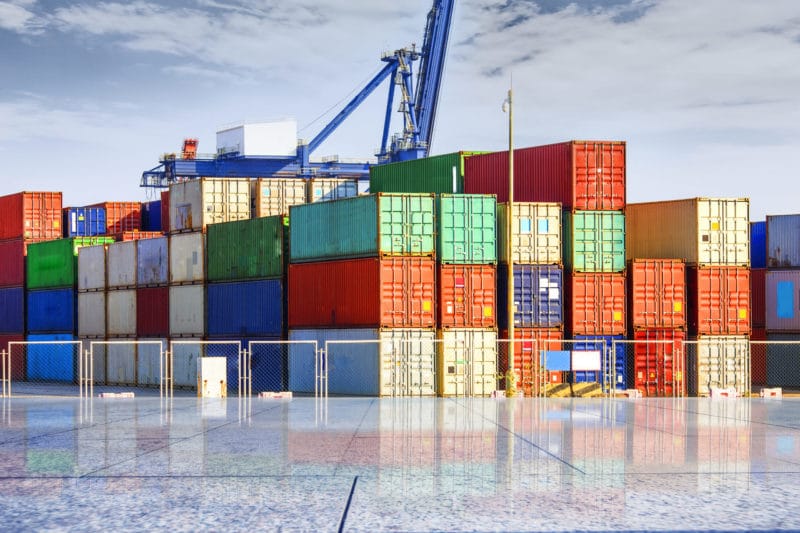China’s Power Shortage: How the Blackouts Affect Ecommerce Sellers

If you’re loving the 25% tariffs, sky-high freight rates, and Amazon storage limits, then you'll be thrilled to hear about this one—power outages in China!
This article will explain China’s current power shortage and how it could eat into your holiday profits going into Q4.
Related Listening: E412: Keeping Your Business Afloat in this Shipping Crisis
Contents
China’s Power Shortage
A shortage in electricity has swept much of eastern China, which is the country’s manufacturing hub and home to a lot of suppliers for ecommerce sellers in the US and Europe.
This comes as sellers are gearing up for a big holiday cycle that everyone hopes would turn out a lot better than when COVID was rampaging across the globe last year.
This severe power crunch is affecting as much as 44% of China’s overall industrial activity across 20 provinces. Power rationing and random power cut-offs have even spread to residential areas in Northeast China at the time of writing. A number of banking giants have cut their growth forecasts for China, predicting a reduction in the country’s manufacturing output well past 2021.

The blackouts in China throw another wrench in the previously well-oiled ecommerce supply chain. Between this, ridiculous tariffs, and sky-high sea freight costs, a lot of ecommerce sellers could be looking at lower profits and higher operating costs for Q4.
What Is Causing China’s Power Shortage?
China’s power shortage boils down to a tight supply of coal and soaring demand for manufactured goods from Western export markets, including major ecommerce marketplaces.
Coal Is in Short Supply
More than 70% of China’s electricity demand for the first eight months of 2021 was filled by coal-fired power plants, and the country remains heavily reliant on coal to this day. However, between our collective effort against climate change and the global shortage of coal itself, power from coal-fired plants is getting more and more expensive for Chinese manufacturers. China is also currently feeling the effects of strained relations with Australia, which is the second biggest supplier of coal in the world.
Fanning the flames is the standing rule on price caps on electricity, which basically means that coal plant operators cannot increase their prices freely and pass on the costs to end users, among which could be the Chinese factory you are working with. As a result, some coal plants in China have either not operated at full capacity or have halted operations altogether, making electricity even more scarce in the region.
Strict Emission Targets
Another reason why coal plants have slowed down is because the Chinese government has been trying to curb coal burning to meet its climate pledges on energy use (even though the country’s toxic emissions exceeded pre-pandemic levels in the Q1 of this year).
Unfortunately, the policies have been imposed in a ‘Jiandan Cubao’ manner, or taking a “simple and brutal” approach without regard for immediate consequences.
China’s national authorities have imposed strict emission targets on the local governments, which the latter are now scrambling to meet before the end of the year—at the expense of power plant operators who’ve been required to comply with electric production limitations, and consequently, factories and manufacturers that cater to retailers in the USA and Europe.
Soaring Demand for Chinese Goods
Demand for online goods soared when the pandemic broke out, as people were stuck at home due to lockdowns and travel restrictions. Even when the lockdowns started to ease up, online retail sales in the US remained pretty high, and it’s only going to get higher as both sellers and consumers ramp up for the holidays.

We know that almost one-third of all manufactured goods are made in China, which means there is more pressure on the supply side to serve this high demand for traded goods. As of writing, Chinese ecommerce suppliers have been scrambling to serve the huge demand of Western export markets, which means a higher demand for power as factories try to get back to full capacity after China’s economy recovers from the pandemic.
Speaking of exports, the US is China’s largest export market (You can even say that American consumers play a role in the current power shortage), so not being able to serve the oncoming Q4 shopping spree could be very bad for business if you’re a China-based supplier.
How China’s Power Shortage Affects Ecommerce Sellers
Price hikes and longer lead times are the most immediate impacts to ecommerce businesses as China’s power supply depletes. But other negative impacts could last long after this year's holiday season.
Input Prices Will Rise
Higher quotes from Chinese suppliers in order to compensate for their higher input costs due to the shortage of electricity are not exactly a shock (no pun intended) at this point. At the time of writing, we’ve seen suppliers raising their prices by as much as 3–5%, and once again, a lot of sellers are faced with the painful choice between eating this added cost or raising their prices and passing it on to consumers, which is not exactly ideal heading into peak shopping seasons.
Christmas and other seasonal products could be the most affected categories. Holiday profits for these products are expected to be significantly lower than pre-pandemic levels.
Some reports suggest that prices in the garments and textiles categories could soar as high as 40% due to the power cuts. Electronics could also take a big hit (as if the global silicon shortage is not problematic enough), as even key suppliers for Apple and Tesla have halted production at some plants.
Inventory Will Take Much Longer to Ship
With the supply side being squeezed, you can expect not only higher costs, but also longer lead times and a general unpredictability in logistics moving forward. Some shipments might not even arrive on time for peak shopping seasons, which could be a huge blow to ecommerce business, particularly those selling seasonal products. Also because of this, you could be forced to offer fewer discounts and promotions in order to allay the higher operational costs.

Ecommerce Inflation Will Worsen
Another effect of China’s power crunch that could be felt well past the holidays is the worsening price inflation for ecommerce products.
China’s current power shortage could be a symptom of a general slowdown in manufacturing from the region in the months and years to come. Economists believe that the inability of sellers in the West to restock their shelves, both physical and digital, caused by production interruptions will contribute to the ongoing ecommerce inflation. As of August 2021, online prices have risen 3.1% year-over-year.
Related Reading: The Truth About Ecommerce Inflation and What Sellers Can Do
What Sellers Can Do About the Power Shortage
All these major disruptions in the supply chain are beyond anyone's control, but there are some efficiencies that you can apply to make sure that your business stays profitable as the prices rise.
Raise Your Prices
Prices from your supplier are likely going to go up over the next few months. Depending on how seasonal your products are, you will run into the tough choice of raising prices to pass the costs onto consumers or eat the costs and reduce your profit margins.
Stay in Stock
Just-in-time inventory seems to be a thing of the past. Make sure to have a safety stock of at least four to six months to ensure you stay in stock. Placing bulk purchase orders as far as six months or even all the way to Christmas 2022 (yes, 2022!) could even make sense to avoid future price hikes.
Depending on the scale of your business, hiring an employee full-time for high-level inventory management could also go a long way to making sure you don’t run out of stock or at least know when you place orders way in advance.
Look for Non-Chinese Suppliers
Power shortages have been affecting Chinese factories for quite some time and may continue in the future. Combined with tariffs and rising production costs in general, it’s one more reason to at least consider sourcing outside of China.
You might find good suppliers for private label goods in India and Southeast Asia. Some sellers have also opted to source domestically in order to cut costs and reduce the effects of China’s power outage on their business.
Streamline Your Own Supply Chain
If sourcing outside of China is not yet a viable option for your business, it’s a good idea to communicate directly with a China-based forwarder, or at the very least, ask your forwarder in the US for a direct contact with the handlers based in China to make sure your stuff ships out efficiently.
Another thing is to consolidate LCLs into FCLs, which is going to be more cost-effective as the prices for shipping and handling continue to rise.
You'll also do well to shop for rates and try to get quotes from 3 to 5 freight forwarders to really open up your options. Another adjustment could be routing your shipments optimally between ports of entry and even working with a 3PL that’s near ports or has multiple warehouse locations in different states.
Final Thoughts
A severe power shortage in the “world’s factory” is the latest in our growing list of supply chain disruptions, and the timing could not be any worse, as everyone is gearing up for a high-demand holiday season.
Strategizing around higher costs and uncertainty in production and transit will help you get around all these blackouts and minimize its negative impacts on your business.
Have your costs risen after all these blackouts in China? Leave a comment below.



